African animals list with pictures and facts. Click on the pictures to discover more about each species.
List of African Animals: Introduction
With habitats ranging from tropical rainforest to desert, Africa is home to many of the world's best-known animals, including the lion, cheetah, giraffe, hippopotamus, African buffalo, zebras, wildebeest and other antelopes, and several species of crocodile.
Africa is the world's second largest continent (Asia is the largest), and the African animals included in the list below represent just a fraction of the continent's amazing biodiversity. We add species to this page regularly, so be sure to come back soon!
- You can download a FREE African animals worksheet for this page here: Free Printable Worksheets.
- Discover animals from other parts of the world on this page: Animals Around The World

Animals That Live In Africa: Page Index
Scroll down to see all of the animals in alphabetical order, or select the species you'd like to see by clicking on its name in the list below. Many of the animals have links that you can click on for further information.
How many species the list of animals that live in Africa have you heard of? What's your favorite African animal? Let us know in the comments at the bottom of the page!
See More African Animals
Discover Animals From All Around The World
- Animals Around The World
- Antarctic Animals
- Arctic Animals
- Asian Animals
- European Animals
- North American Animals
- South American Animals
For individual species (i.e. aardvark), we've included the animal's scientific name and its IUCN conservation status (if assessed). For groups of species (i.e. antelopes) we've included the number of species in the group and the group's name.
African Animals List
Aardvark

- Scientific Name: Orycteropus afer
- Conservation Status: Least Concern
The aardvark is a nocturnal mammal whose diet consists mainly of ants and termites. It uses its excellent sense of smell to find food, and its long, sticky tongue to capture its prey. The species' thick skin protects it from insect bites and stings.
If threatened, this expert burrower will retreat to the safety of its hole. If no burrow is available, it will quickly dig a new one, reversing out backwards when the danger has passed.
The aardvark is the only member of the family Orycteropodidae, and the last remaining species of the order Tubulidentata.
- You can find out more about the aardvark here: Aardvark Facts
Aardwolf
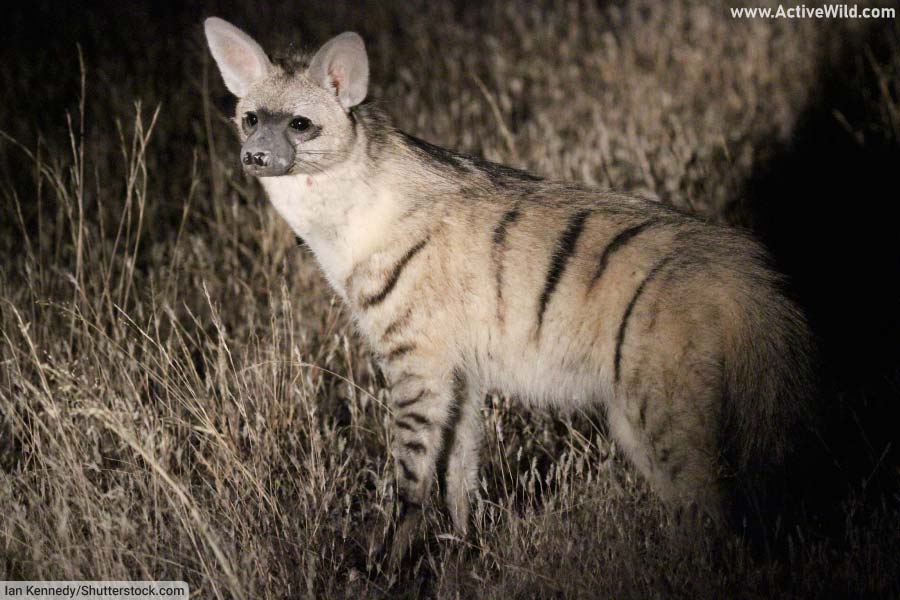
- Scientific Name: Proteles cristata
- Conservation Status: Least Concern
Aardwolf means ‘earth wolf’ in Afrikaans, a language spoken in South Africa.
Despite its name, the aardwolf is not a wolf or even a member of the dog family. In fact, it's one of the four living species of hyena, and a member of the hyena family Hyaenidae.
The aardwolf lives in scrubland (a habitat consisting of grass and small bushes) in eastern and southern Africa. It has a nocturnal lifestyle, sleeping in burrows during the day.
Unlike the other three hyenas, the aardwolf doesn't eat large vertebrates. Instead, the aardwolf's diet consists mainly of termites and other small insects. The aardwolf uses its long, sticky tongue to capture its prey. It can eat up to 250,000 termites in one night!
- You can find out more about the aardwolf here: Aardwolf Facts
African Buffalo
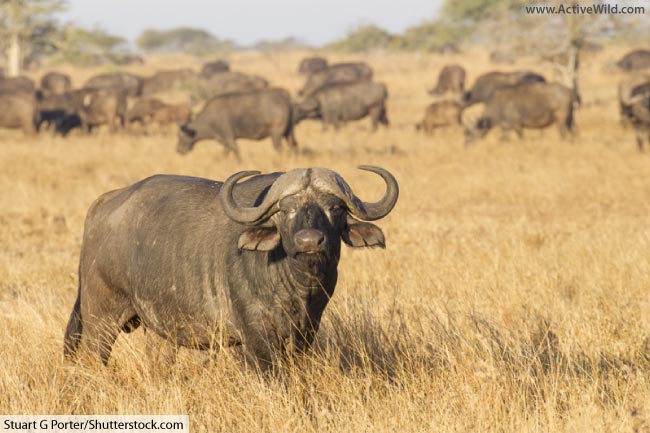
- Scientific Name: Syncerus caffer
- Conservation Status: Least Concern
The African buffalo is a large, powerfully-built hoofed animal. It belongs to the subfamily Bovinae, a group of animals whose members are known as bovines. (Bovinae is part of the family Bovidae, which contains a variety of hooved animals, including cattle, antelopes, goats and sheep.)
There are several subspecies of African buffalo. Each varies slightly in appearance and is found in a different region of Africa. The largest and best-known subspecies is the Cape buffalo, which is found in Southern Africa.
Both male and female African buffaloes have distinctive upward-curving horns, the tips of which can be over 1 m (3.3 ft.) apart in large males. The horns of full-grown adult males meet in the middle, creating a hard panel known as a 'boss'.
The buffalo's horns are used both as a means of defense against predators, and by male buffaloes when fighting for dominance in the herd.
An adult African buffalo is large, powerful and well-armed; it has little to fear from most predators; only a very brave or hungry lion would attack a full-grown adult. These large animals are known for their unpredictable behavior and will occasionally attack humans.
- You can find out more about the African buffalo here: African Buffalo Facts
African Bush Elephant
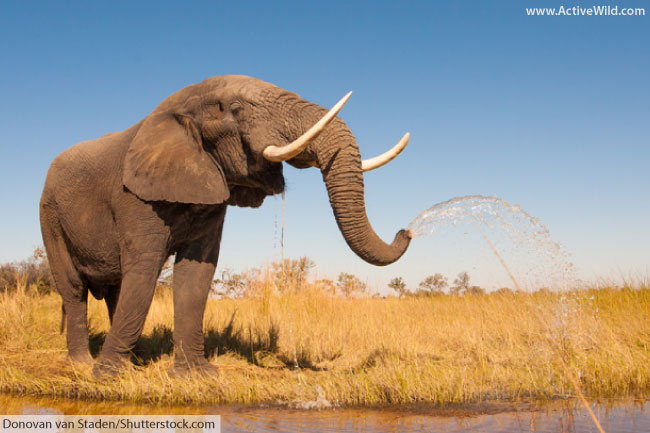
- Scientific Name: Loxodonta africana
- Conservation Status: Vulnerable
The African bush elephant is the largest land animal in the world. It stands up to 4 m (13.1 ft.) tall, and weighs up to 6,048 kg (13,334 lb.).
Both male and female African bush elephants have tusks (only male Asian elephants have tusks).
Until recently, all elephants in Africa were considered to be the same species, the African elephant. Recent studies have shown that Africa's elephant population consists of two different species: the African bush elephant and the smaller African forest elephant.
The African bush elephant is herbivorous, eating a wide variety of plant matter. The species is found throughout sub-Saharan Africa, but its population is becoming increasingly fragmented.
- You can find out more about the African bush elephant on this page: African Bush Elephant Facts.
Antelope
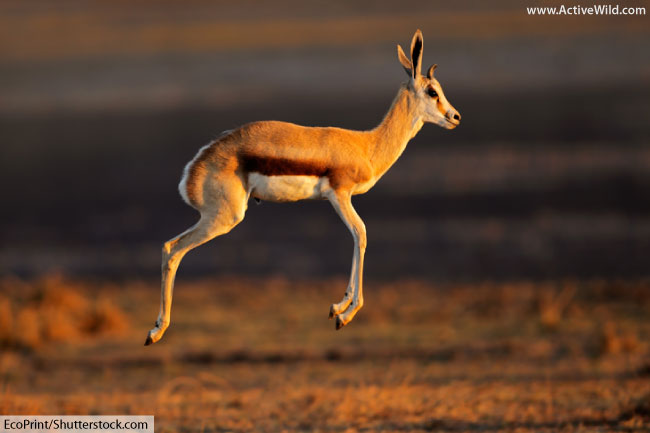
- Number of species: 91
- Family: Bovidae
Antelopes are a group of hooved mammals within the family Bovidae (the family also includes animals such as bison, buffaloes, sheep, goats and cattle).
All antelopes have horns (although in some species they are only present on males), and most live in herds. Living in herds helps to keep antelopes safe from predators. With all those eyes and ears looking and listening out for danger, predators find it hard to approach undetected.
There are 91 species of antelope, most of which are native to Africa. Antelopes live in a range of habitats, including forests and grasslands. Antelopes are herbivores (plant eaters).
The largest antelope is the giant eland, a species found in the savannas of Central Africa. The smallest is the royal antelope, which is found in Western Africa. It is just 25 cm (9.8 in.) tall at the shoulder.
Baboon

- Number of species: 5
- Genus: Papio
Baboons are monkeys in the genus (a group of related animals) Papio. They have long snouts and close-set eyes, giving their faces a dog-like appearance.
here are five species of baboon: the hamadryas baboon, Guinea baboon, olive baboon, yellow baboon, and chacma baboon.
All five species are found in Africa. Baboons live in groups called troops. Troops range in size from 5 to 250 individuals. Male baboons use noises and visual threats, such as the baring of their long, sharp canine teeth, to establish dominance within the troop.
The Guinea baboon, the smallest of the baboons, has a conservation status of 'Near Threatened'; the conservation status of other four species is 'Least Concern'.
- You can find out more about baboons here: Baboon Facts
Bonobo
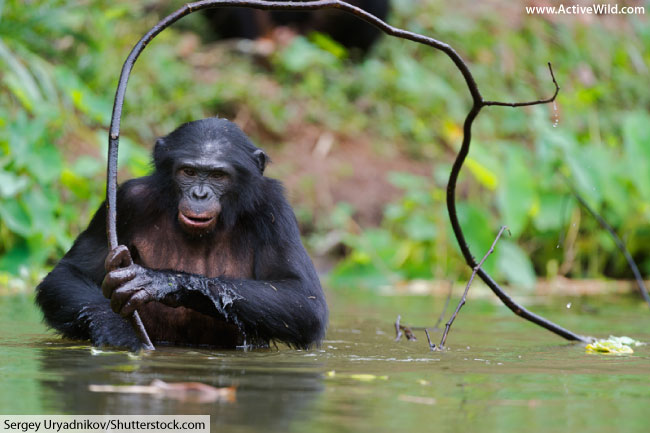
- Scientific Name: Pan paniscus
- Conservation Status: Endangered
The bonobo is an endangered primate that lives in the rainforests of Central Africa. It is closely-related to the chimpanzee; both species belong to the genus Pan. It is thought that the two species split fewer than 1 million years ago.
Bonobos can be differentiated from chimpanzees by their lighter build, smaller heads, pink lips and black faces.
Bonobos and chimpanzees are our closest living relatives in the animal kingdom. They share over 98% of our genes, and are more closely related to humans than they are to gorillas.
- You can find out more about bonobos here: Bonobo Facts
Boomslang
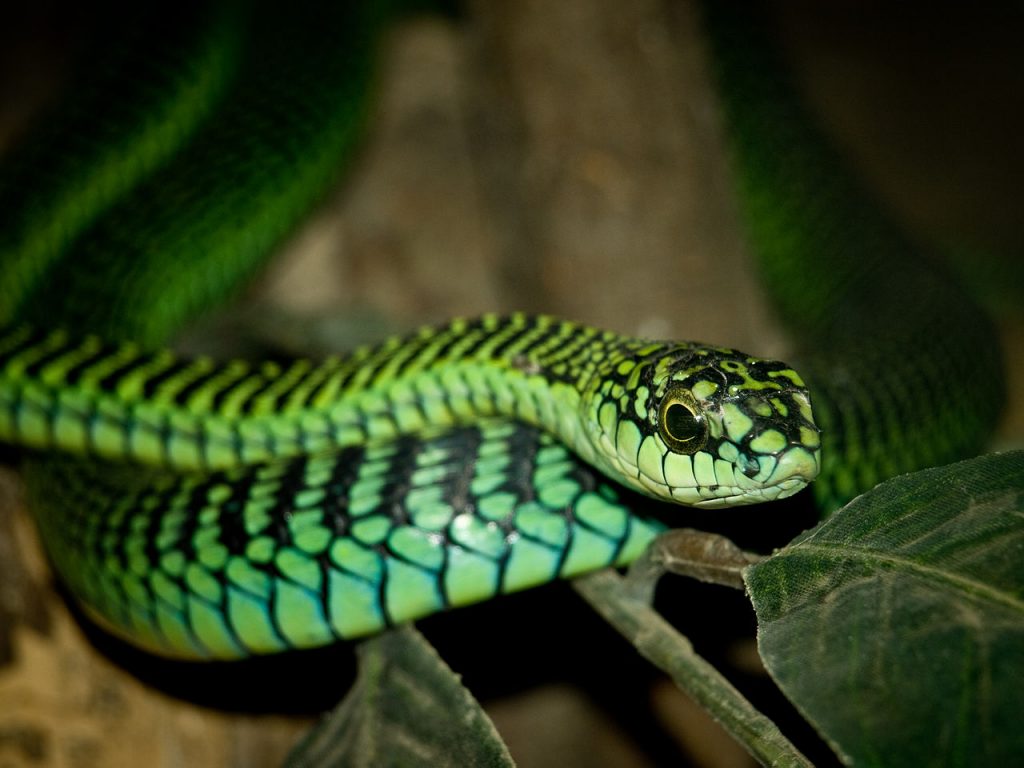
- Scientific Name: Dispholidus typus
- Conservation Status: Least Concern
The boomslang is a highly venomous snake found in sub-Saharan Africa. Its name means ‘tree snake’ in Afrikaans (a language spoken in South Africa). This large snake is mainly arboreal (tree-dwelling).
Greatly feared by local people, the boomslang is capable of delivering a bite that is potentially fatal if not treated. Like other members of the family Colubridae, the boomslang’s venom-delivering fangs are located at the back of its mouth. Snakes such as these are said to be ‘rear-fanged’.
Bushbaby
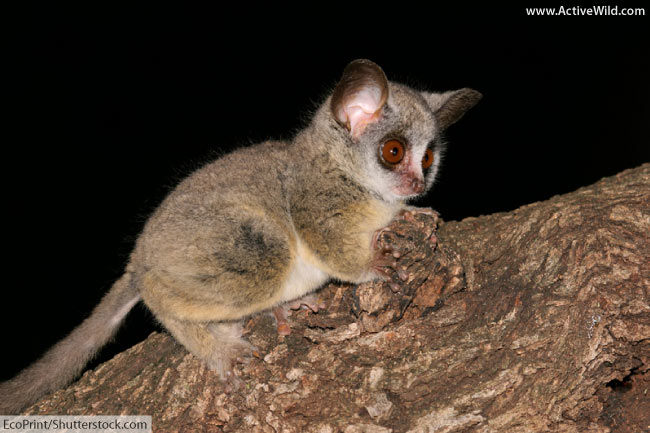
- Number of species: 18
- Family: Galagidae
Bushbabies are nocturnal primates in the family Galagidae.
These small, monkey-like animals are expert jumpers. While leaping through dense vegetation, bushbabies fold back their bat-like ears for protection. Their huge eyes provide excellent night vision.
Bushbabies are also known as Galagos or Nagapies (which means ‘little night monkeys’ in Afrikaans, a language spoken in South Africa). Their English name is thought to come either from their baby-like appearance, or from the wails they make at night.
Cheetah
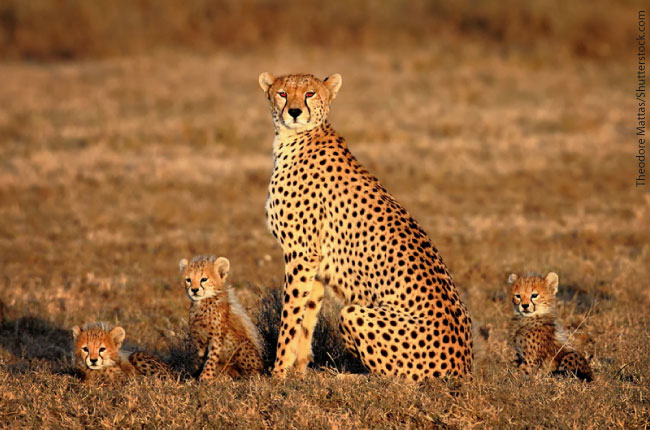
- Scientific Name: Acinonyx jubatus
- Conservation Status: Vulnerable
The cheetah is the world's fastest land animal. It uses its great speed to capture its prey, which consists of other fast-moving animals such as antelopes, ostriches and hares.
The cheetah's pale orange coat is covered with distinctive black spots. The spots provide camouflage, breaking up the animal's outline against grasses and other foliage.
The cheetah is a member of the family Felidae – the cat family. Although one of the larger cats, the cheetah is not considered to be a 'big cat' as it is neither a member of the subfamily Pantherinae, nor a member of the genus Panthera. The cheetah's closest relatives are the cougar and the jaguarundi.
- You can find out more about the cheetah on this page: Cheetah Facts
Crocodile
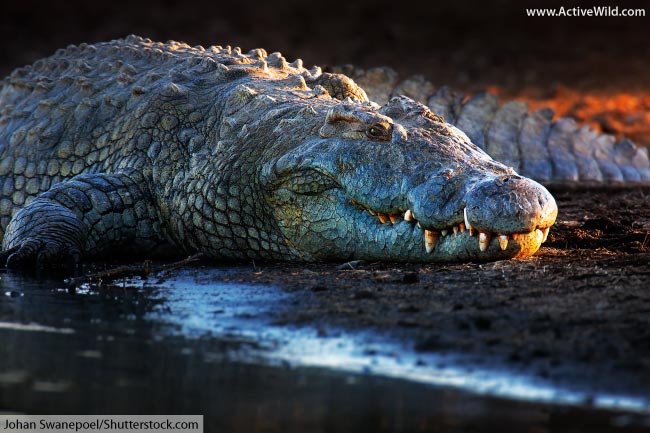
- Number of crocodile species found in Africa: 4
- Number of crocodile species worldwide: 15
- Subfamily: Crocodylinae
Crocodiles are semi-aquatic, predatory reptiles of subfamily Crocodylinae. These master ambush predators lie in wait in shallow water for their prey to approach. When the unsuspecting victim gets within range, the crocodile launches an explosive attack, capturing the prey in its immensely strong jaws.
There are four species of crocodile found in Africa: the slender-snouted crocodile, Nile crocodile, West African crocodile, and the dwarf crocodile.
The largest African crocodile species is the Nile crocodile. It is the world's second-largest crocodile species; only Australia's saltwater crocodile is bigger! The Nile crocodile is one of Africa's most dangerous animals.
- You can find out more about the Nile crocodile here: Nile Crocodile Facts
- You can find out about all of Africa's crocodiles here: African Crocodiles List & Information
Desert Locust
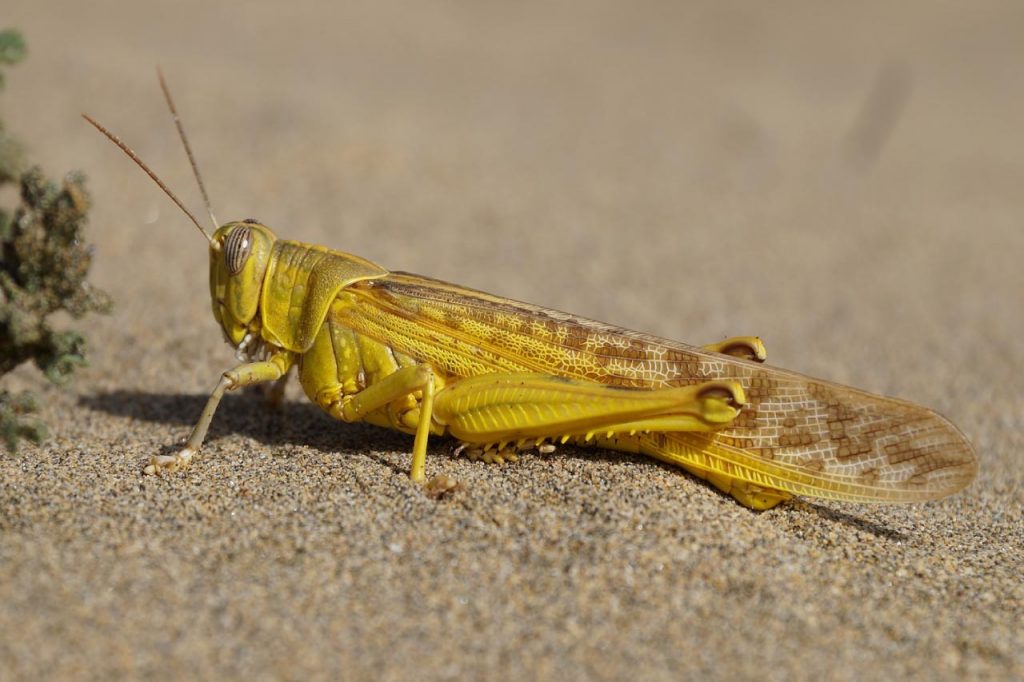
- Scientific Name: Schistocerca gregaria
- Conservation Status: Least Concern
The desert locust is found in North Africa, the Middle East and parts of Asia. Like all locusts, it is a member of the grasshopper family Acrididae.
For most of the time, the desert locust is solitary and flies at night. Under certain conditions – usually an increase in rainfall after a period of drought – it congregates and multiplies rapidly, forming huge swarms that fly during the day.
Desert locust swarms can cover an area of 460 square miles (1,200 km2), and contain up to 100 billion insects! These crop-destroying insect clouds can move at up to 124 miles (200 km) in a day.
It is said that a plague of locusts can affect the livelihood of one-tenth of all humans.
Driver Ant
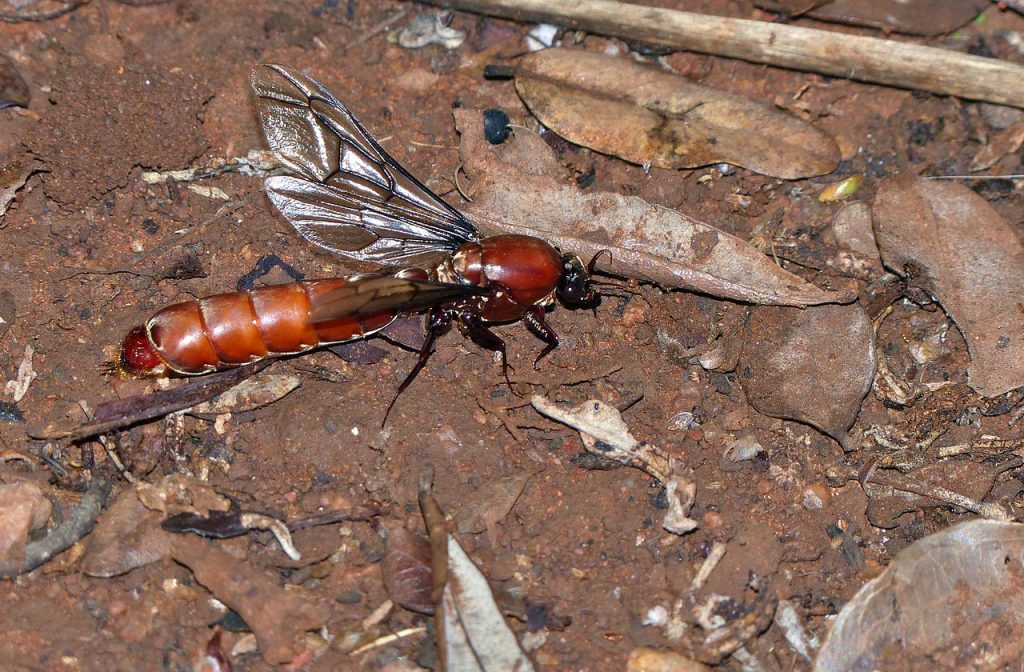
- Number of species: around 60
- Genus: Dorylus
A driver ant is an ant of genus Dorylus, which contains 61 currently-recognized species (source). Driver ants are one of several groups of ants known as "army ants".
Driver ants live in huge colonies containing over 20 million insects. When food becomes short, driver ants march through the undergrowth in long lines consisting of many millions of insects, eating any insects (and occasionally larger animals) in their path.
Although driver ants are able to sting, they usually attack with their powerful jaws. The insects are capable of delivering a painful bite to a human.
Local people are known to use the insects’ jaws, which remain closed even if the ant’s head is separated from its body, to close wounds.
Fennec Fox
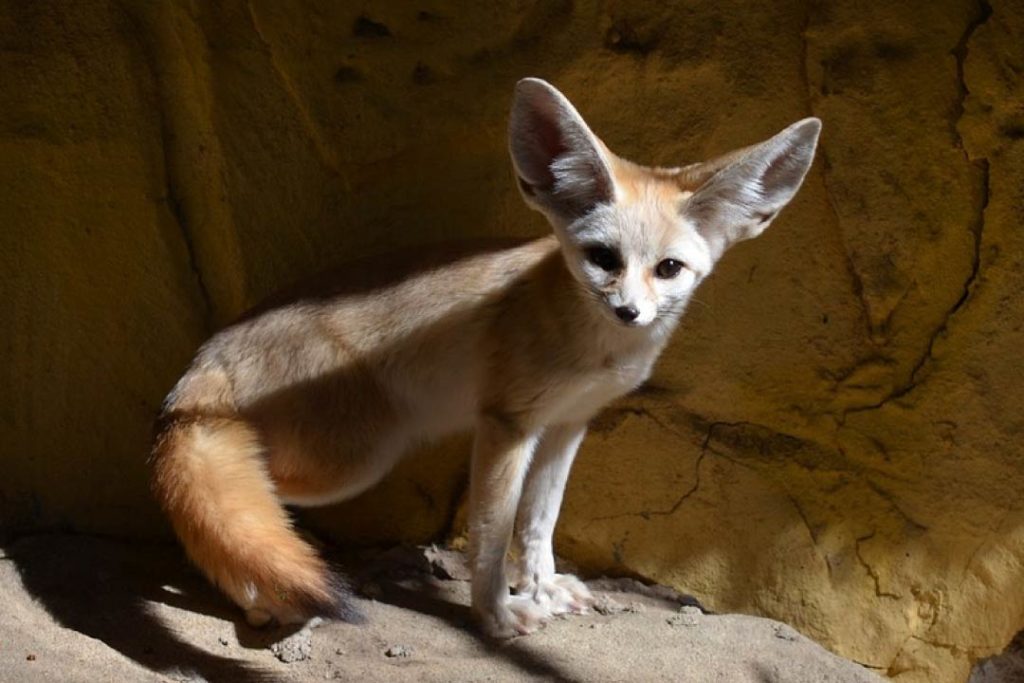
- Scientific Name: Vulpes zerda
- Conservation Status: Least Concern
The fennec fox is the smallest member of the dog family, Canidae. It is found in the Sahara Desert and other dry regions of Africa.
The fennec fox's large ears are an adaptation for living in desert regions. They help the fox stay cool by transferring its body heat into the air. The fennec fox has excellent hearing, and is even capable of hearing prey moving underground.
- You can find out more about the fennec fox (and its adaptations for living in the desert) on this page: Fennec Fox Facts
Giraffe
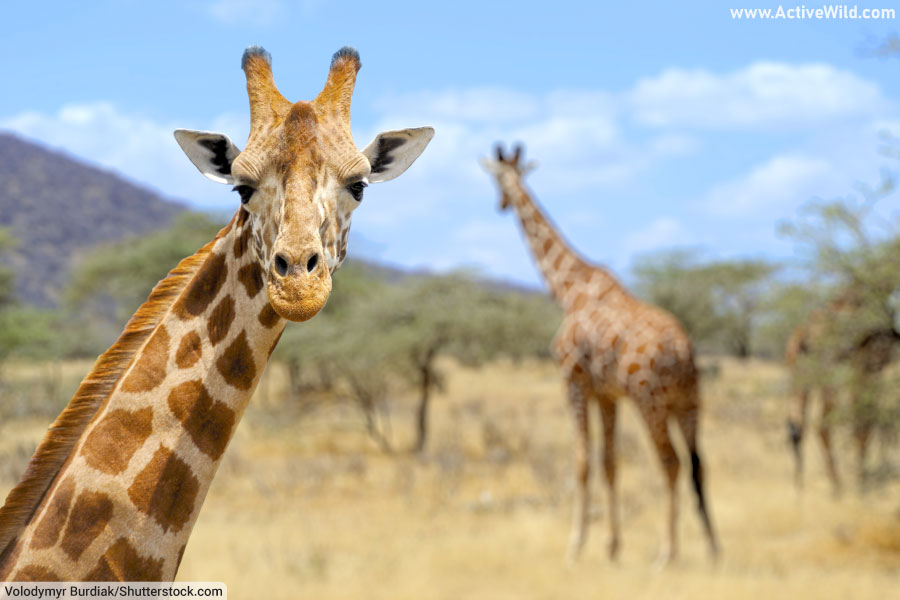
- Scientific Name: Giraffa camelopardalis
- Conservation Status: Vulnerable
With its long neck and stilt-like legs, the giraffe is one of the most distinctive of all African animals, and the world’s tallest land animal. The animal's great height allows it to feed on leaves that are beyond the reach of other animals.
There is some disagreement over the number of giraffe species. Some authorities, such as the IUCN, recognize only one species, while others, such as the Catalogue of Life, recognize four, or even eight giraffe species!
On the heads of both male and female giraffes are horn-like growths called ossicones. The giraffe's closest living relative is the okapi.
- You can find out more about the tallest creature in the world here.
Gorilla
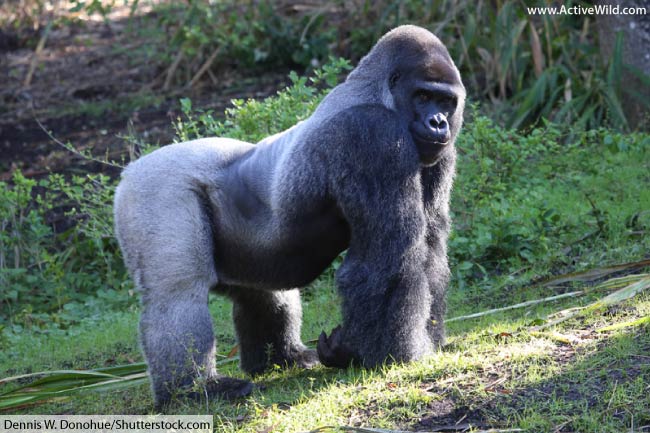
- Number of species: 2
- Genus: Gorilla
- Both the eastern gorilla and the western gorilla are Critically Endangered
Gorillas are the world's largest primates. (Primates is a group that includes animals such as apes, monkeys, and lemurs).
Gorillas are members of the family Hominidae, members of which are known as "great apes". If you look in the mirror you'll see another member of this family! Chimpanzees, bonobos and orangutans are also great apes.
There are two species of gorilla: the eastern gorilla and the western gorilla. Both live in the forests of central Africa. Despite their fearsome looks, gorillas are mainly herbivorous.
The eastern gorilla has two subspecies: the mountain gorilla and eastern lowland gorilla. The western gorilla also has two subspecies: the western lowland gorilla and Cross River gorilla.
Both species of gorilla are critically endangered. Sadly, poaching has been identified as the main cause of the continued decline of both species.
- You can find out more about gorillas here: Gorilla Facts.
- You can find out more about the mountain gorilla subspecies here: Mountain Gorilla Facts
Gorilla Charity: The Gorilla Organization.
Hippopotamus
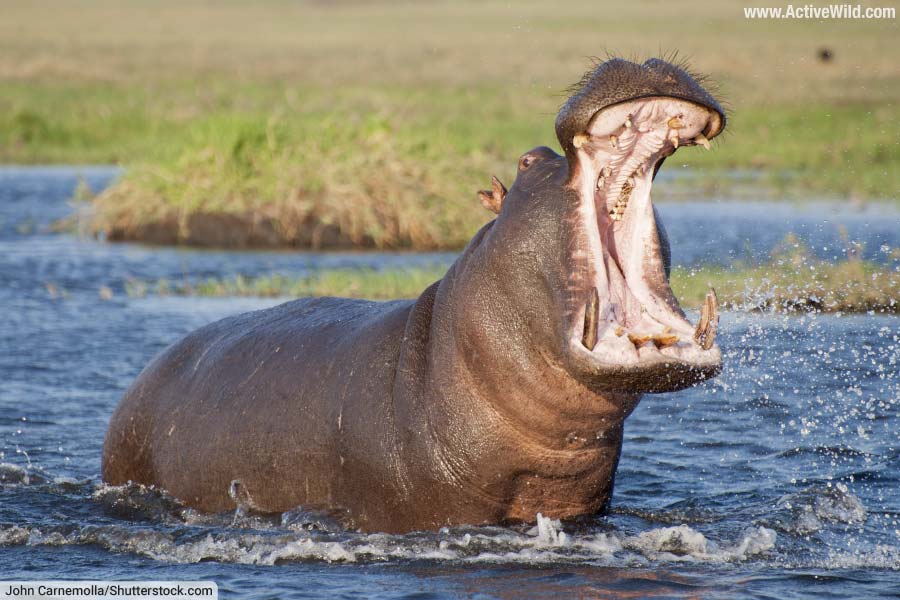
- Scientific Name: Hippopotamus amphibius
- Conservation Status: Vulnerable
The hippopotamus is also known by its abbreviated name, "hippo".
The word 'hippopotamus' is derived from ancient Greek for "river horse". It is a fitting name for this large animal, which has a semi-aquatic lifestyle. Hippopotamuses spend most of the day bathing in water or mud, only emerging at dusk when the temperature is cooler.
A smaller hippo species, the pygmy hippo, lives in Africa's rainforests. The closest relatives of the two hippos are Cetaceans – a group of animals that includes whales, dolphins and porpoises.
- You can find out more about the hippopotamus here: Hippo Facts
- You can find out more about the pygmy hippo here: Pygmy Hippopotamus Facts
Hyena

- Number of species: 4
- Family: Hyaenidae
The family Hyaenidae contains four living species: the spotted hyena, brown hyena, striped hyena and aardwolf.
Hyenas may look like dogs, but in fact are more closely related to cats. The animal group Carnivora (to which both dogs and cats belong) has two branches; Caniformia contains animals such as dogs, bears, and seals; while Feliformia contains animals such as cats, mongooses and hyenas.
Although hyenas have a reputation for being scavengers, it is only the striped hyena and the brown hyena that find most of their food this way. The spotted hyena, which is also known as the laughing hyena, actively hunts most of its own prey.
The aardwolf is the 'odd one out' among the hyenas. Instead of eating large vertebrates, it feeds on insects such as ants and termites. (You can see the aardwolf further up this list of African animals.)
- You can find out more about the spotted hyena here: Spotted Hyena Facts
Jackal
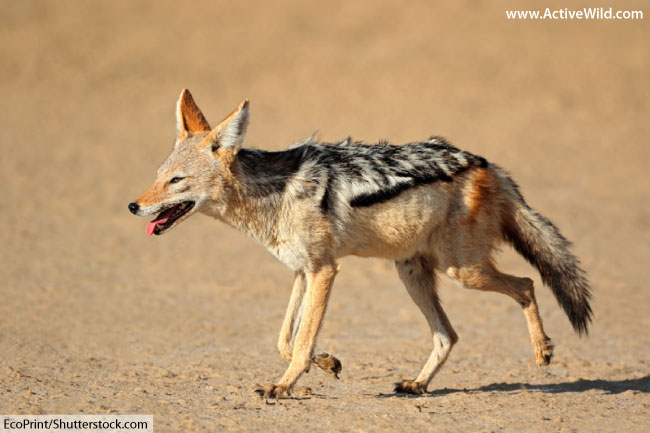
- Number of species: 3
- Genus: Canis (although not all members of the genus are jackals)
Jackals are small to medium-sized canids (members of the dog family, Canidae). Of the three jackal species, two – the black-backed jackal and the closely-related side-striped jackal, are found in Africa. (The golden jackal, which is more closely related to the grey wolf than it is to the other jackals, is found in Europe and Asia.)
Jackals are most active at dawn and dusk. They are omnivorous, hunting small animals, scavenging carrion and also eating plant matter. The conservation status of all three jackal species is Least Concern.
- Find out more about the black-backed jackal here: Black-Backed Jackal Facts
- You can see a list of ALL of the members of the dog family here: Wild Dogs List.
Kori Bustard
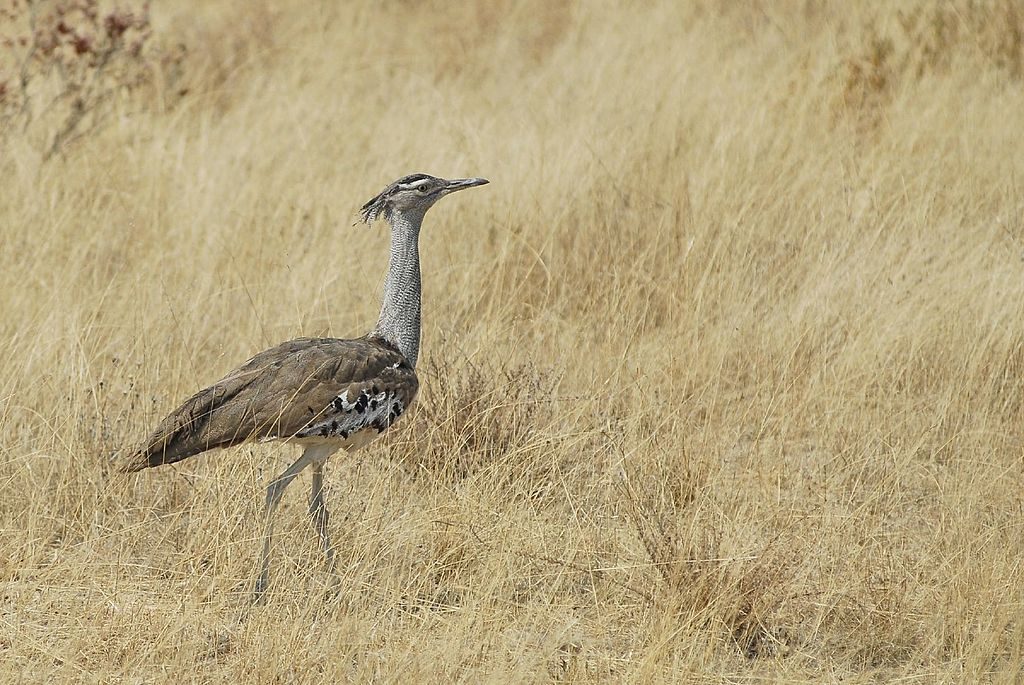
- Scientific Name: Ardeotis kori
- Conservation Status: Near Threatened
The kori bustard is Africa’s largest flying bird, and the world’s heaviest flying animal. It stands up to 1.2 m (3.94 ft.) tall, and has a wingspan of 275 cm (9 ft.).
There is a large difference in size between male and female kori bustards, with males being up to three times the weight of females.
The kori bustard rarely flies and builds its nest on the ground. The species is usually found in open grasslands in southern Africa.
Lappet-Faced Vulture
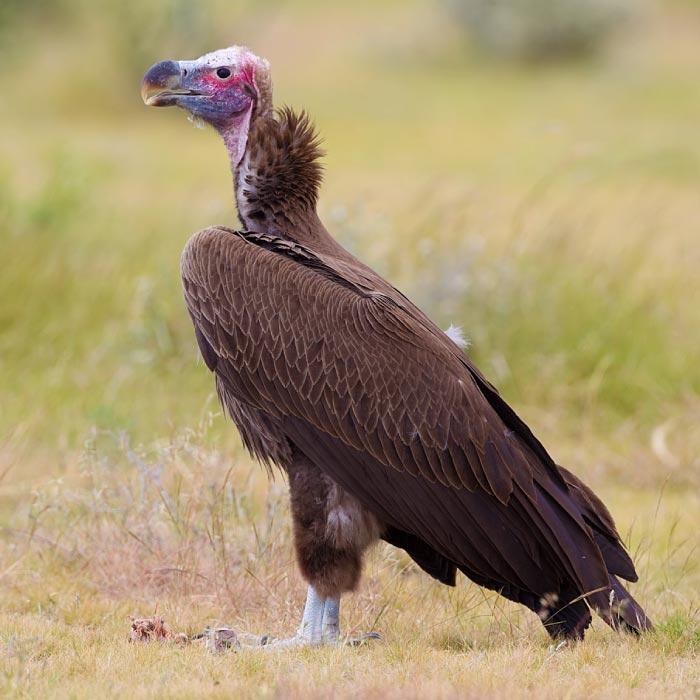
- Scientific Name: Torgos tracheliotos
- Conservation Status: Endangered
With a wingspan of up to 2.9 m (9.5 ft.), the lappet-faced vulture is one of the largest vultures in Africa (the Cape vulture and the griffon vulture may be slightly heavier, but their wingspans are smaller).
The lappet-faced vulture is top of the pecking order around carrion, using its size and strength to see off smaller scavengers until it has eaten its fill. In fact, the lappet-faced vulture is doing the other scavengers a favor; with its huge, hooked bill, it is able to tear open leathery hides that other species would not be able to break into.
Old World vultures such as the lappet-faced vulture find their food primarily by sight. They lack the excellent sense of smell possessed by the New World vultures.
Leopard

- Scientific Name: Panthera pardus
- Conservation Status: Vulnerable
The leopard is a fast, powerful big cat found in both Africa and Asia. Its coat is dotted with distinctive rings known as "rosettes". These provide camouflage in the grasslands and forests in which this adaptable species lives.
The leopard is known for its great strength, and is capable of dragging its prey up a tree. By doing so, the leopard can prevent its meal from being stolen by lions and other large predators.
- You can find out more about the leopard here: Leopard Facts
Lion

- Scientific Name: Panthera leo
- Conservation Status: Vulnerable
One of the most iconic African animals, the lion is a much feared predator that, like so many of Africa's large animals, is now threatened.
The total number of adult lions left in the wild is estimated to be between 23,000 and 39,000; that's around half the number of people who attend a single National Football League game.
The primary cause behind the lion's continued decline is persecution by livestock farmers, who regard the animal as a threat to their livelihoods. Habitat loss has also played a major part in the species' decline.
The lion is the second largest member of the cat family Felidae (the largest being the tiger). It is found in a variety of habitats, including savanna, grassland, woodland and the edges of deserts.
Unlike most cats, the lion is a social animal, living in groups known as prides. A typical pride consists of several females and their young, with either one or a small number of males. Lions tend to be inactive during the day, and can spend up to 20 hours of the day resting.
- Learn more about lions here: Amazing Lion Facts.
Mongoose

- Number of species: 34 (29 of which have the word 'mongoose' in their names).
- Family: Herpestidae
Mongooses are small, carnivorous mammals in the family Herpestridae.
There are 34 species of mongoose, although only 29 of them have the word 'mongoose' in their names.
Mongooses are found in Asia and southern Europe as well as in Africa. One of the best-known species of mongoose is the meerkat, which lives in desert and other dry habitats in Africa.
Mongooses are diurnal (active during the day). They have a varied diet, which includes insects, earthworms, crabs, lizards and other small animals. Mongooses will also eat snakes, and are largely unaffected by snake venom.
- You can find out more about meerkats here: Meerkat Facts
Monkey
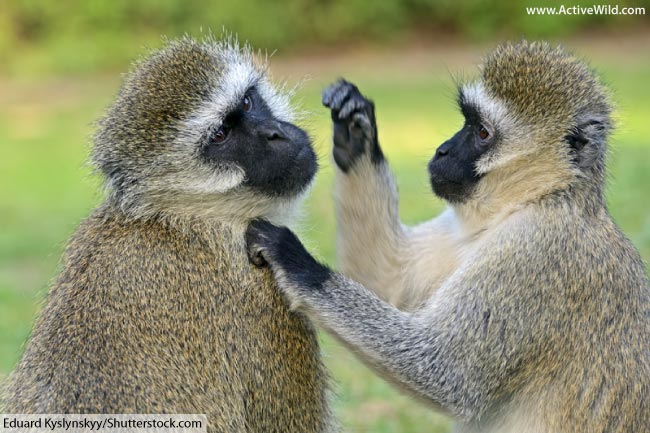
- Number of species: There are around 153 species of Old World Monkey. Not all are found in Africa.
- Family: Cercopithecidae (Old World Monkeys)
Africa is home to many species of monkey. Well-known examples of African monkeys include the black-and-white colobus, mandrill, vervet monkey (pictured above) and the five species of baboon.
All monkeys found in Africa are in the family Cercopithecidae, a group of animals also known as the Old World Monkeys.
Old World monkeys are more closely-related to apes than they are to the New World monkeys of the Americas. Unlike New World Monkeys, Old World monkeys don't have prehensile tails to help them climb trees. (Prehensile means 'able to grab').
The world's largest monkey, the mandrill, is found in the rainforests of Central Africa.
Mosquito

- Number of species: around 3,500 (not all found in Africa)
- Family: Culicidae
Despite their small size, mosquitoes are among the most dangerous African animals. Mosquitoes are responsible for more human fatalities each year than any other animal.
Mosquitoes feed on the blood of a variety of animals, including humans. Although only a small amount of blood is taken at a time, the insect spreads deadly diseases such as malaria, yellow fever and dengue fever.
Mosquitoes use their highly-adapted mouthparts to pierce the skin and drink the blood of their victims. Chemicals in the insect's saliva prevent the blood from clotting while the mosquito is feeding.
Nile Monitor
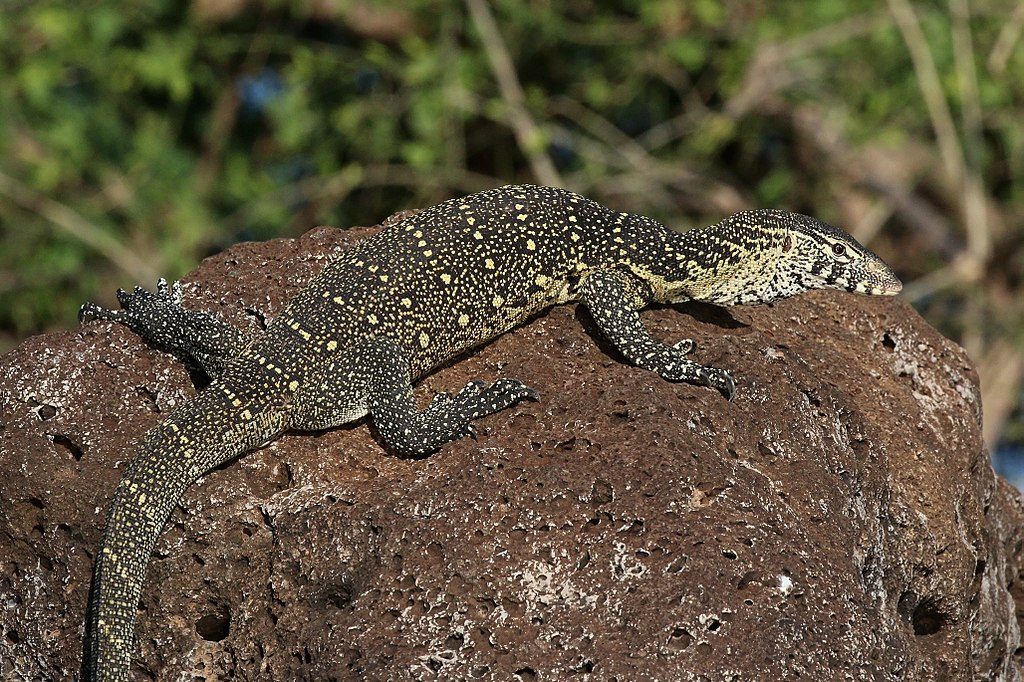
- Scientific Name: Varanus niloticus
- Conservation Status: Unassessed
The Nile monitor is one of Africa’s biggest lizards, growing to lengths of well over 2 meters (6.56 ft.). It is widespread across much of sub-Saharan Africa, and is also found along the Nile River in North Africa.
This African reptile is often found by rivers. It is a capable swimmer, propelling itself through the water with its tail, in the manner of a crocodile. Its nostrils are located high up on its snout, enabling the reptile to breathe while in the water.
Okapi
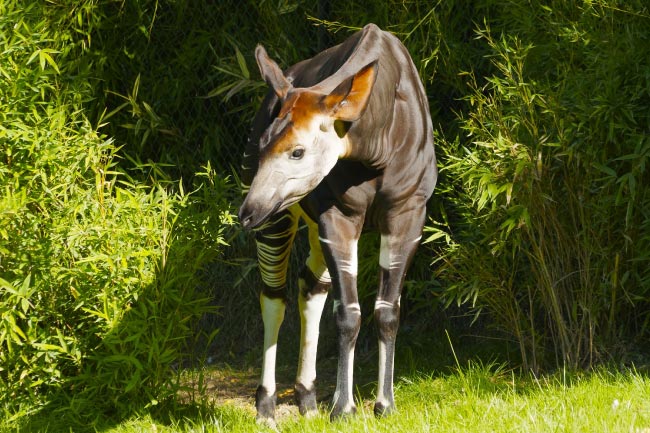
- Scientific Name: Okapia johnstoni
- Conservation Status: Endangered
The okapi is a shy, rarely-seen African animal that lives in the forests of Central Africa.
Don't be fooled by the okapi's zebra-like leg stripes, its closest relative is actually the giraffe. The stripes help break up the okapi's outline and provide camouflage in the forest habitat.
The horn-like projections on the head of a male okapi are called ossicones. (Unlike the giraffe, in which both male and females have ossicones, they are only present on the male okapi.)
The okapi is an endangered species, mainly due to the loss of its forest habitat.
- Find out more about the okapi at our Okapi Facts page.
Ostrich (Common)
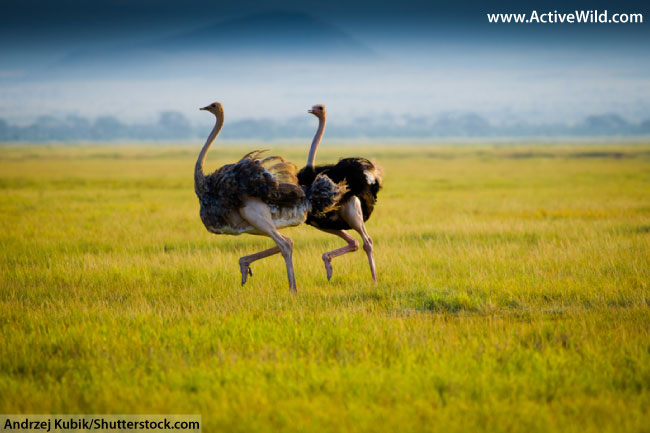
- Scientific Name: Struthio camelus
- Conservation Status: Least Concern
The common ostrich is one of two ostrich species, both of which are found in Africa. (The other ostrich species is the Somali ostrich, which was judged by scientists to be sufficiently different for it to be declared a separate species in 2014.)
The common ostrich may not be able to fly, but it is the holder of multiple records. Not only is it the world's largest bird, but it is also the fastest (on land) and the producer of the biggest eggs!
The diet of the common ostrich includes grasses, flowers, seeds, other plant matter, and the occasional insect. The ostrich also swallows small stones to help it digest its food.
The ostrich's main predator is the cheetah, which is one of the few animals able to catch this fast-moving bird.
- You can find out more about ostriches here: Common Ostrich Facts
Pangolin
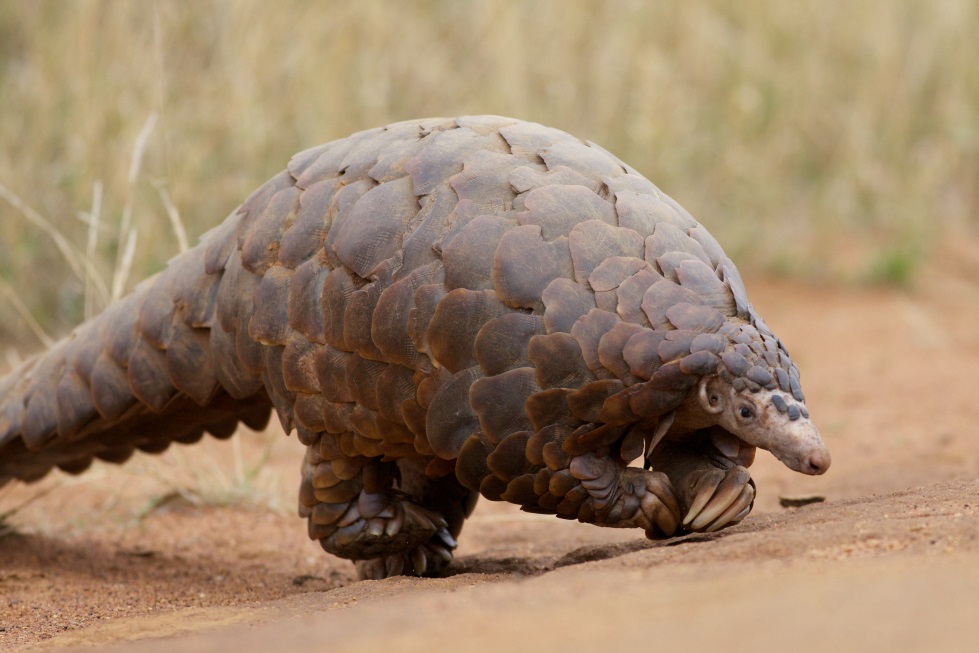
- Number of species: 8 (4 are found in Africa)
- Family: Manidae
Of the eight species of pangolin, four are found in Africa. They are the tree pangolin, long-tailed pangolin, giant pangolin and ground pangolin. The conservation status of all four African pangolins is Vulnerable.
Pangolins have armored coats made of hardened scales. The scales are made of keratin; the same material out of which our fingernails are made.
A pangolin's scales make up around 20% of its body weight. If threatened, a pangolin will roll up into an armored ball. As an additional protection against predators, pangolins are able to emit an unpleasant smelling chemical.
Pangolins are nocturnal and insectivorous (insect-eating). Their diet consists mainly of ants and termites, which they capture with their long, thin tongues.
- Find out more about the giant pangolin on this page: Giant Pangolin Facts
Puff Adder
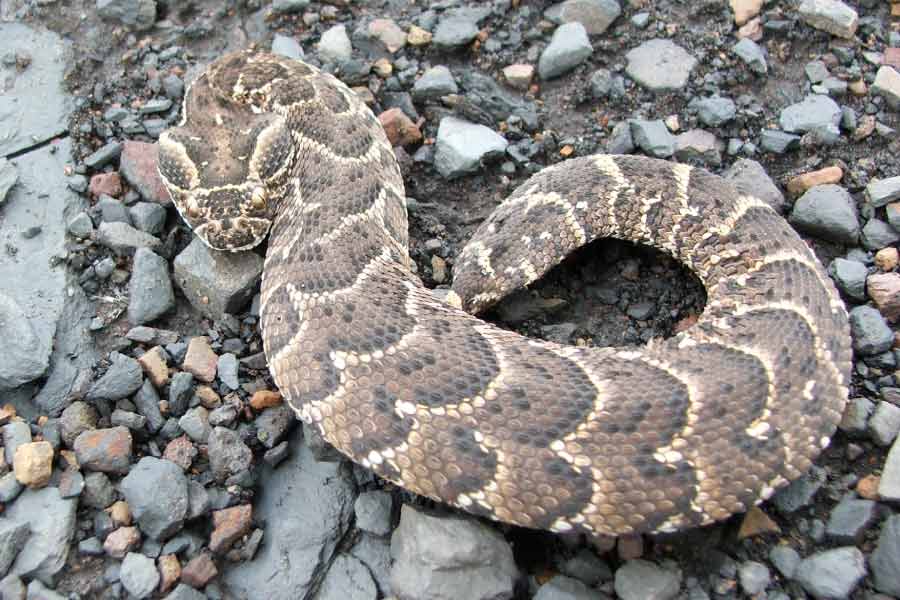
- Scientific Name: Bitis arietans
- Conservation Status: Currently Unassessed
The puff adder is a medium-sized venomous African snake.
One of the most common snakes in Africa, the puff adder is present in most habitats except rainforests and deserts. It is most commonly found in savannas and grasslands.
The puff adder is responsible for the most snake bite fatalities in Africa. Its venom is highly potent and the species is known to be aggressive. A nocturnal ambush hunter, the puff adder waits for its victims to draw near before striking.
Rhinoceros
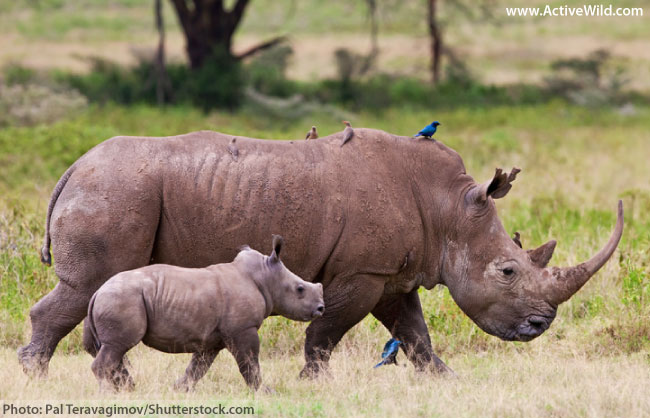
- Number of species: 5 (2 species found in Africa)
- Family: Rhinocerotidae
Rhinoceroses, or rhinos, are among the world's largest land animals, and among the best-known of all African animals. The name rhinoceros comes from the Greek for "nose horn".
There are five species of rhino, two of which live in Africa: the white rhinoceros and the black rhinoceros. Both African species have two horns on their noses.
The white rhinoceros is the largest of all the rhinos, with males (the larger of the two sexes) weighing around 2400 kg (5,000 lb.).
Although not as big as its cousin, the black rhino is by no means small, with males reaching weights of around 1400 kg (3,090 lb.).
Despite their names, both the white and black rhino are grey. The best way of telling them apart is by looking at their lips: the white rhino has square lips; those of the black rhino are beak-shaped.
Rhinos are herbivores, their diet consisting mainly of grass.
The conservation status of the white rhinoceros is Near Threatened. The black rhinoceros is Critically Endangered, with a wild population of around 5,000.
The biggest threat to both African species is poaching. Rhino horns can be ground down for use in traditional Chinese medicine, and are also used to make ornaments. Rhino horns are quite literally worth their weight in gold.
- Find out more about rhinos here.
- You can read about the critically endangered black rhino here: Black Rhino Facts
Royal Goliath Beetle
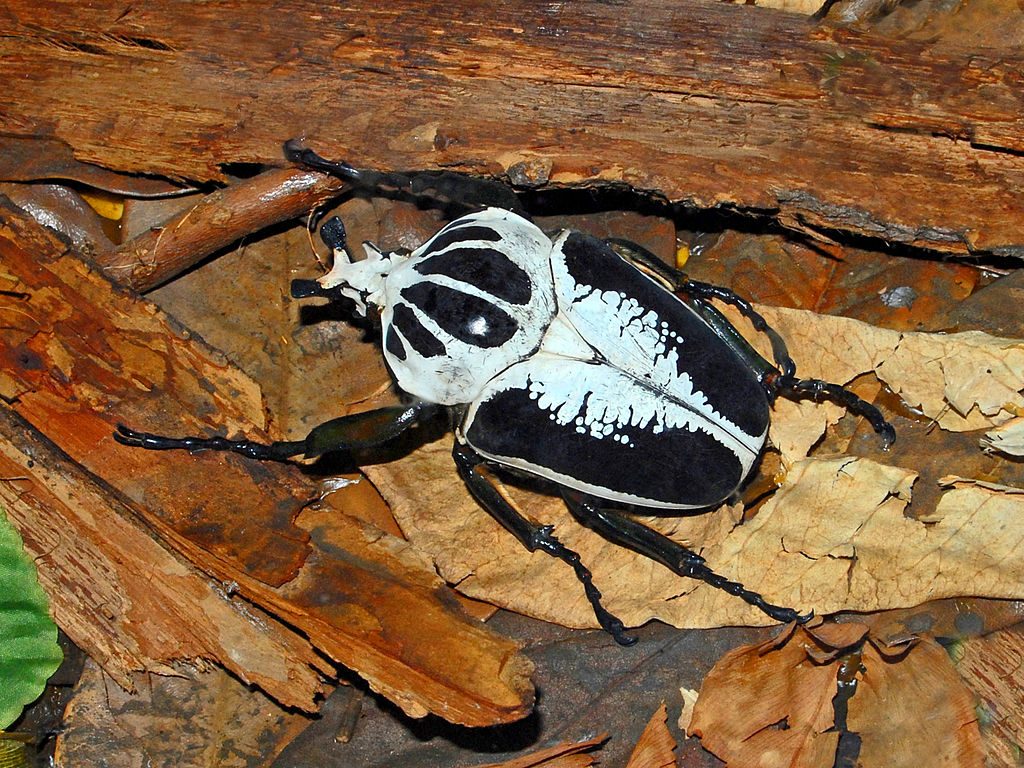
- Scientific Name: Goliathus regius
- Conservation Status: Currently Unassessed
Goliath beetles are the world’s biggest insects in both their larval and adult form. All five species of Goliath beetle live in Africa’s tropical forests. The royal Goliath beetle is one of the largest Goliath beetles, reaching a length of up to 11 cm (4.3 in) and a weight of 60 g (2.1 oz.) in its adult form.
Goliath beetles are herbivorous. As larvae, they feed on rotting wood; as adults they feed on tree sap and fruit.
Secretary Bird
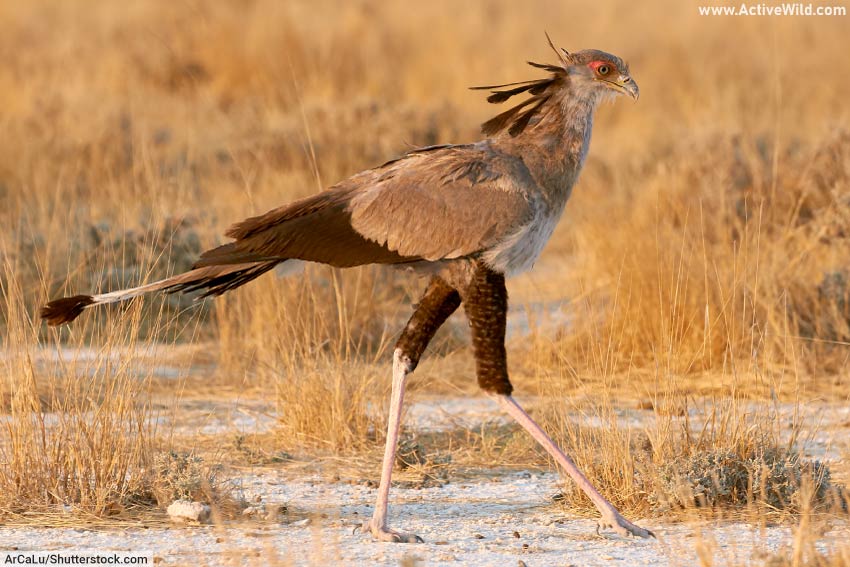
- Scientific Name: Sagittarius serpentarius
- Conservation Status: Vulnerable
The secretary bird is a large and distinctive bird of prey found in sub-Saharan Africa. It is known for its ability to hunt venomous snakes, but will also eat a wide variety of other animals.
The long-legged predator spends most of its time on the ground, and rarely flies. Instead, it uses its long wings to keep balance when running, and also to hunt its snake prey; by holding out its wings, the secretary bird confuses the snake into not striking.
Serval
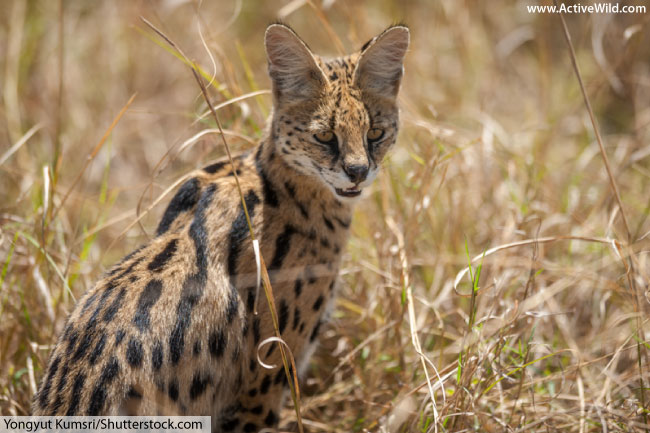
- Scientific Name: Leptailurus serval
- Conservation Status: Least Concern
The serval is a medium-sized wild cat found throughout much of sub-Saharan Africa. It stands up to 2 ft. (62 cm) tall at the shoulder, and has gold fur with dark markings.
The legs of the serval are the longest, in relation to body size, of any cat. The species has big ears and a sense of hearing to match, locating its prey by sound.
The serval preys mainly on rodents, but will also take other small animals such as birds and reptiles. It is active both by day and by night. The species is usually found in African savannas.
- You can find out more about the serval here: Serval Facts
- You can see a list of wild cats here: Wild Cats List with Pictures & Facts.
Warthog (Common)
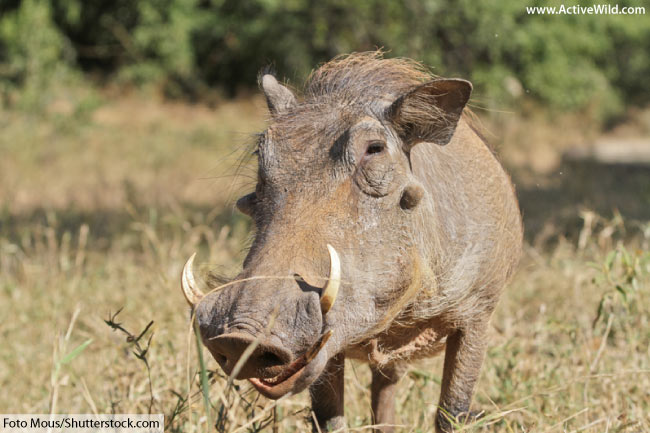
- Scientific Name: Phacochoerus africanus
- Conservation Status: Least Concern
The common warthog is one of two living warthog species, both of which are found in Africa. (The other warthog species is the desert warthog.)
Warthogs are members of the pig family, Suidae. The name "warthog" refers to the fleshy bumps on the faces of both species.
The common warthog is widespread throughout much of sub-Saharan Africa. It lives in grassland, savanna and woodland habitats.
The warthog's tusks are used for fighting with other warthogs and as a means of as defense against predators.
Both pairs of tusks are extended teeth that protrude through the animal's mouth. The larger upper tusks grow from the upper jaw and turn upwards.
- You can find out more about the common warthog here: Common Warthog Facts
Wildebeest
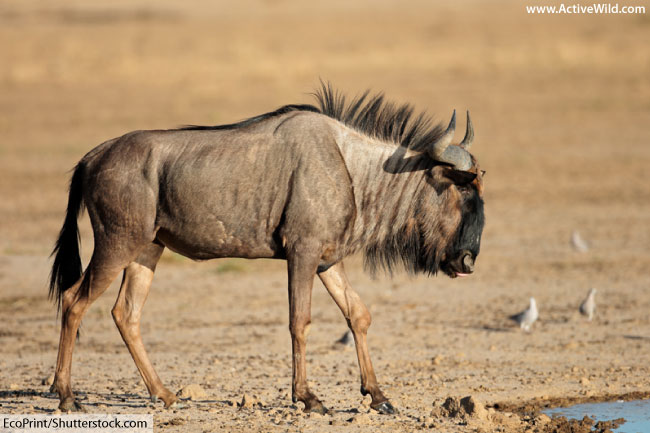
- Number of species: 2
- Genus: Connochaetes
Alson known as gnus, wildebeest are antelopes with upwardly-curving horns, long faces, shaggy manes and long tails.
There are two species of wildebeest: the blue wildebeest and black wildebeest.
The black wildebeest is found mainly in South Africa and neighboring countries. The blue wildebeest has a larger range, being found in across several countries in southern and south-central Africa.
The blue wildebeest is the larger of the two species. It is grey with darker stripes on its neck and shoulders. The black wildebeest is dark brown or black.
Over 1.7 million blue wildebeest take part in the Great Migration of Serengeti and Masai Mara. This annual circular migration, which is also undertaken by hundreds of thousands of gazelles and zebras, is one of the world's most impressive natural spectacles.
Zebra
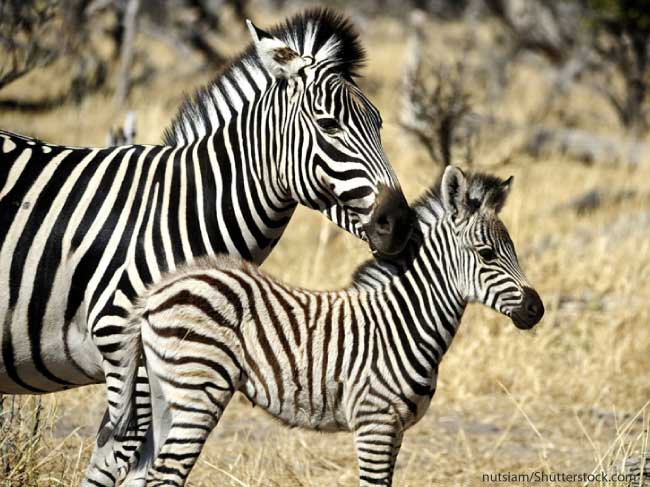
- Number of species: 3
- Genus: Equus (also in this genus are the wild horse, the donkey, and two species of wild ass)
Nearly everyone in the world can identify a zebra, but far fewer people know that there are actually three different species of zebra: the plains zebra, mountain zebra and Grévy's zebra.
All three zebra species are in the genus Equus; the same animal group to which the horse and the donkey belong. (The group also includes two lesser-known species: the African wild ass and the kiang, an ass found in Asia.)
Many theories have been put forward to explain the purpose of the zebra's stripes. These include: camouflage, heat dispersal, creation of an optical illusion to fool predators, and to make the zebra less attractive to biting flies (experiments in which horses were painted with stripes back up this last theory).
The plains zebra is the most common and widespread zebra. It is found in several parts of south-central and southern Africa. The conservation status of the species is Near Threatened due to over-hunting and the fencing off of traditional grazing routes.
The mountain zebra is found in hot, rocky, mountainous or hilly regions of south west Africa. There are no stripes on the undersides of this species. The mountain zebra's IUCN conservation status is Vulnerable.
Grévy's zebra is not just the largest species of zebra, it's also the world's largest wild horse. The species is found in eastern Central Africa. The conservation status for Grévy's zebra is Endangered. Fewer than 2,000 adult individuals exist in the wild, although the population is now stable.
- You can find out more about zebras here: Zebra Facts
African Animals List: Conclusion & Related Pages
We hope that you have enjoyed this list of African animals, and have clicked on some of the pictures for more information on your favorite species! What's your favorite African animal? Are there any we've missed? Let us know in the comments below! Become an animal expert! Find out more about the animal kingdom by visiting this page: Animals: The Ultimate Guide.



I NEED MORE BIRDS!!!!!!!!!!!!!!!!!!!!!!!!!!!😈😈😈😈😈👿🤬🤬🤬🤬🤬🤬🤬
I’m decorating my room in an African wildlife style and this really helped me pick some figures and pictures I wanna hang!!! Thanks!! ❤️❤️
What a great project! We’re glad the page helped! 🙂
The Active Wild Team
There is no Honey Badger it is supposed to be here post it in the website
Hi, you can find out about the honey badger on this page: Honey Badger Facts
Is a camel an African animal?
Hi,
Good question! The dromedary (a camel with one hump) is present in desert regions of Africa, where it has been used as a domestic animal for thousands of years.
Regards,
The Active Wild Team
Are there any african rats?
why is there not lots of lizards?
Hi,
You can see some African lizards (and other African reptiles) here: African Reptiles List
What part of Africa does the Puff Adder live in?
The puff adder is found in most parts of sub-Saharan Africa (i.e. the region below the Sahara Desert). The species is also found on the Arabian Peninsula, which is part of Western Asia.
Are there tarantulas in africa
Good question,
Yes, there are several species of tarantula found in Africa, including the king baboon spider, a burrowing species with a leg span of almost 8 inches and a venomous bite!
hi is a meercat african
Hi,
Great question. Yes, the meerkat is an African animal. It’s found in the following countries: Angola, Botswana, Namibia and South Africa.
You can find out more about meerkats here: Meerkat Facts
The Active Wild Team
What about the honey badger?!
WHAT is the mongoose eating?
… looks like a tasty millipede to us!
Is there an African goat- or deer-like animal that has a long white, hairy extension to its tail? I have seen a picture of the animal on tv but did not get the location. Thanks ! I love your site!
Hi Peg,
Thank you for your comment. Could your mystery animal have been an antelope? Perhaps a nyala – a species with a long bushy tail with areas of white?
Hope this helps,
The Active Wild Team
hi can you help me find the ring tailed leemar? im working on a madagascar animals progect and i need
to get it done by the 20th.
Hi,
Check out this page: Ring Tailed Lemur
Good luck with the project!
i need madagascar animals can you help me?
Hi James,
We’ve put it on the ‘to do’ list! 🙂
I’m an animal expert
Good work Durant! 🙂
Is there a webpage on facts about felines around the world? Because I’m doing an art project on wild cats and big cats.
Hi, great project!
There’s lots of info on Active Wild …
This page: Wild Cats List contains pictures & facts on every wild cat species.
You’ll find loads of info on big cats here: What is a Big Cat?.
I hope this helps!
Active Wild Admin
WHY TIGER IS NOT IN AFRICA?
Hi James,
The tiger is an Asian species.
Check out this page: Tiger Facts
Could there be a way for you to find out more about the african Sand Cat
Hi,
Thank you for your comment. That’s a good suggestion; we’ll add it to our ‘to do list’ 🙂
I would like to question is the A to Z also African Animals?
Hi,
Thank you for your question. No, the A to Z animals section features animals from all around the world, not just Africa.
Hope that helps!
The Active Wild Team.
The mongoose is evil.
SECONDED! I might just get nightmares…. CREEPY MONGOOSE…